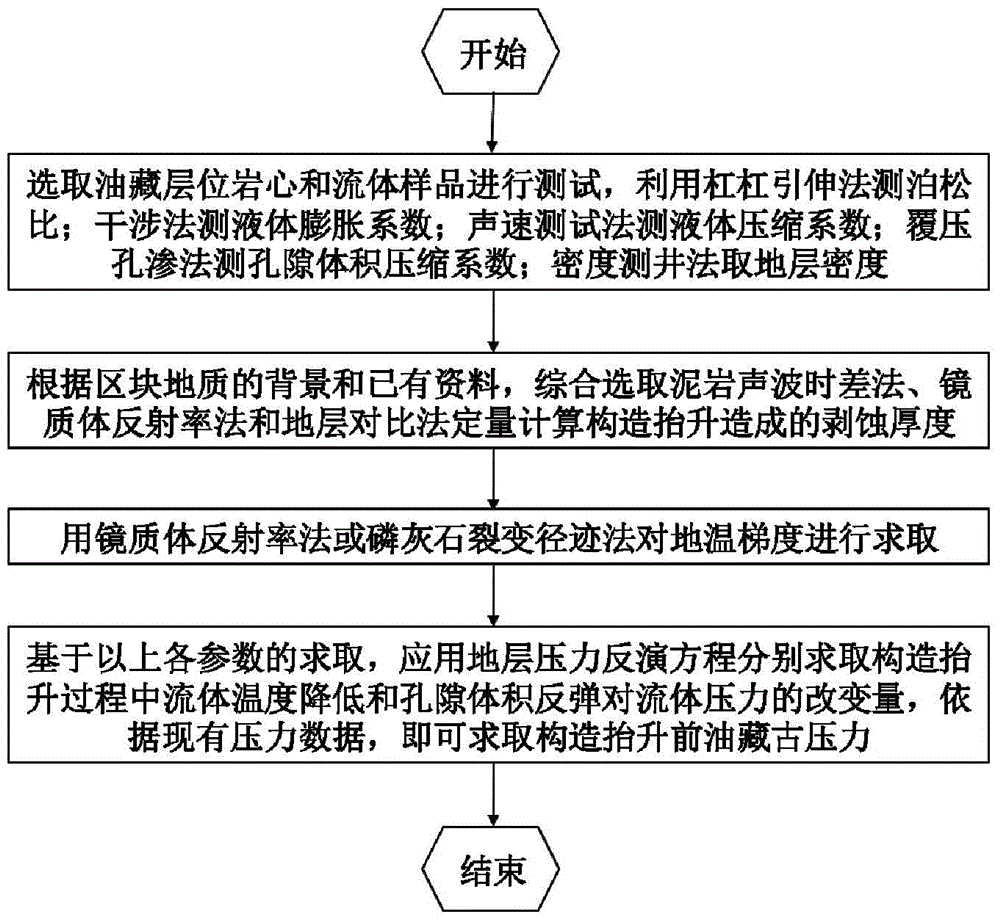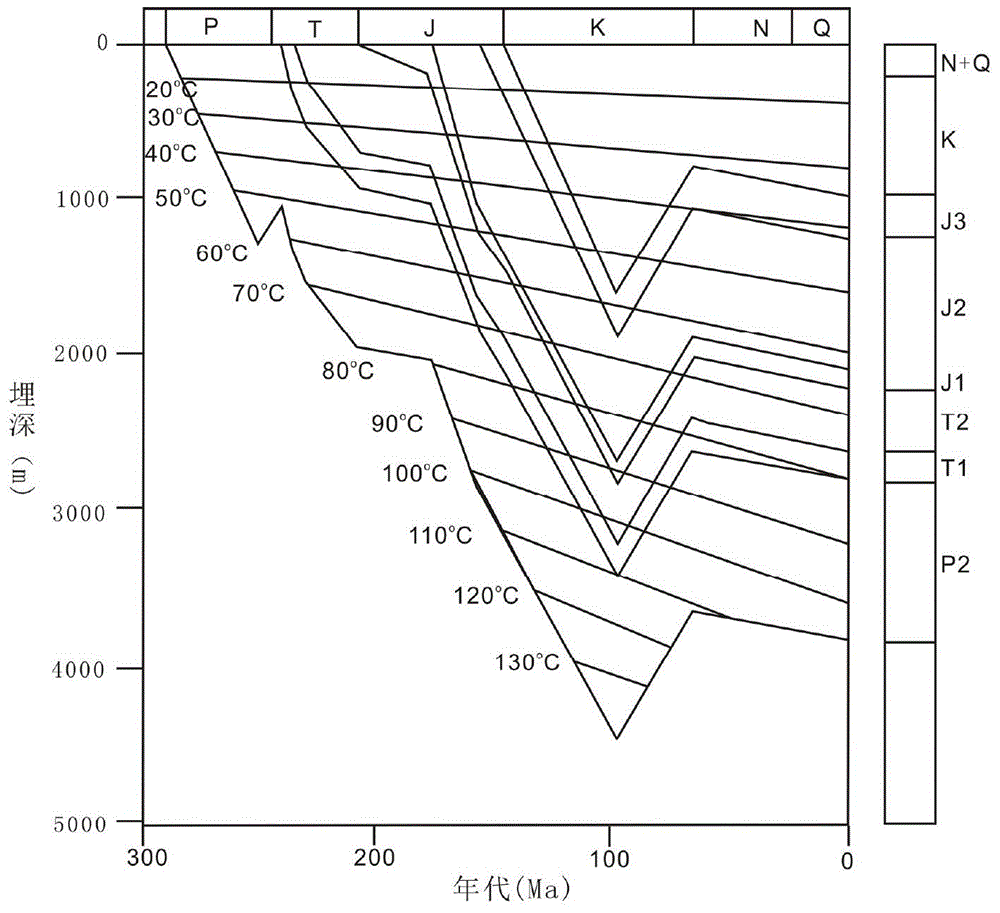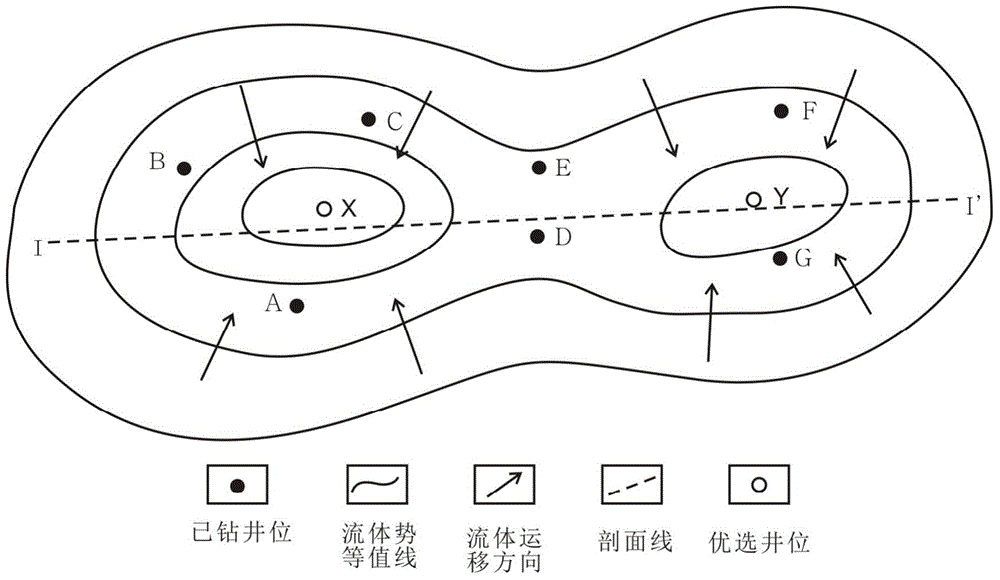Paleopressure quantitative inversion detection method of oil reservoir
A detection method and oil reservoir technology, applied in earthwork drilling and production, wellbore/well components, etc.
- Summary
- Abstract
- Description
- Claims
- Application Information
AI Technical Summary
Problems solved by technology
Method used
Image
Examples
Embodiment Construction
[0051] Such as figure 1 , figure 2 , image 3 , Figure 4 The paleopressure quantitative inversion detection method and its application of a kind of oil reservoir are shown, and the detection demonstration is carried out in a specific basin oil reservoir, and the paleopressure before the tectonic movement is calculated through the simulation of the burial history of the oil reservoir in this basin and the quantitative measurement of denudation thickness .
[0052] Such as figure 1 For the detection process, firstly, according to the test results of the core and fluid samples, the Poisson’s ratio ν of the rock is taken as 0.25, and the compressibility coefficient of the rock pore volume β r 26×10 -4 MPa -1 , the liquid compressibility coefficient β f 5×10 -4 MPa -1 , the liquid expansion coefficient α f 5×10 -4 K -1 , average formation density ρ r =2320kg / m 3 ; The denudation thickness of the Cretaceous in the basin was restored by using the vitrinite reflectance...
PUM
 Login to View More
Login to View More Abstract
Description
Claims
Application Information
 Login to View More
Login to View More - R&D
- Intellectual Property
- Life Sciences
- Materials
- Tech Scout
- Unparalleled Data Quality
- Higher Quality Content
- 60% Fewer Hallucinations
Browse by: Latest US Patents, China's latest patents, Technical Efficacy Thesaurus, Application Domain, Technology Topic, Popular Technical Reports.
© 2025 PatSnap. All rights reserved.Legal|Privacy policy|Modern Slavery Act Transparency Statement|Sitemap|About US| Contact US: help@patsnap.com



